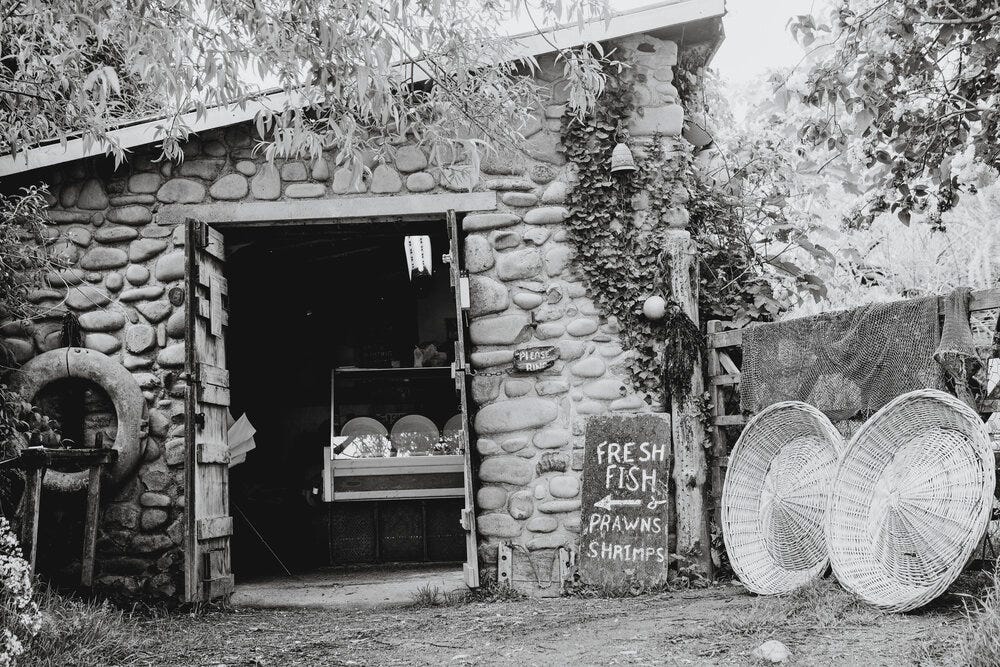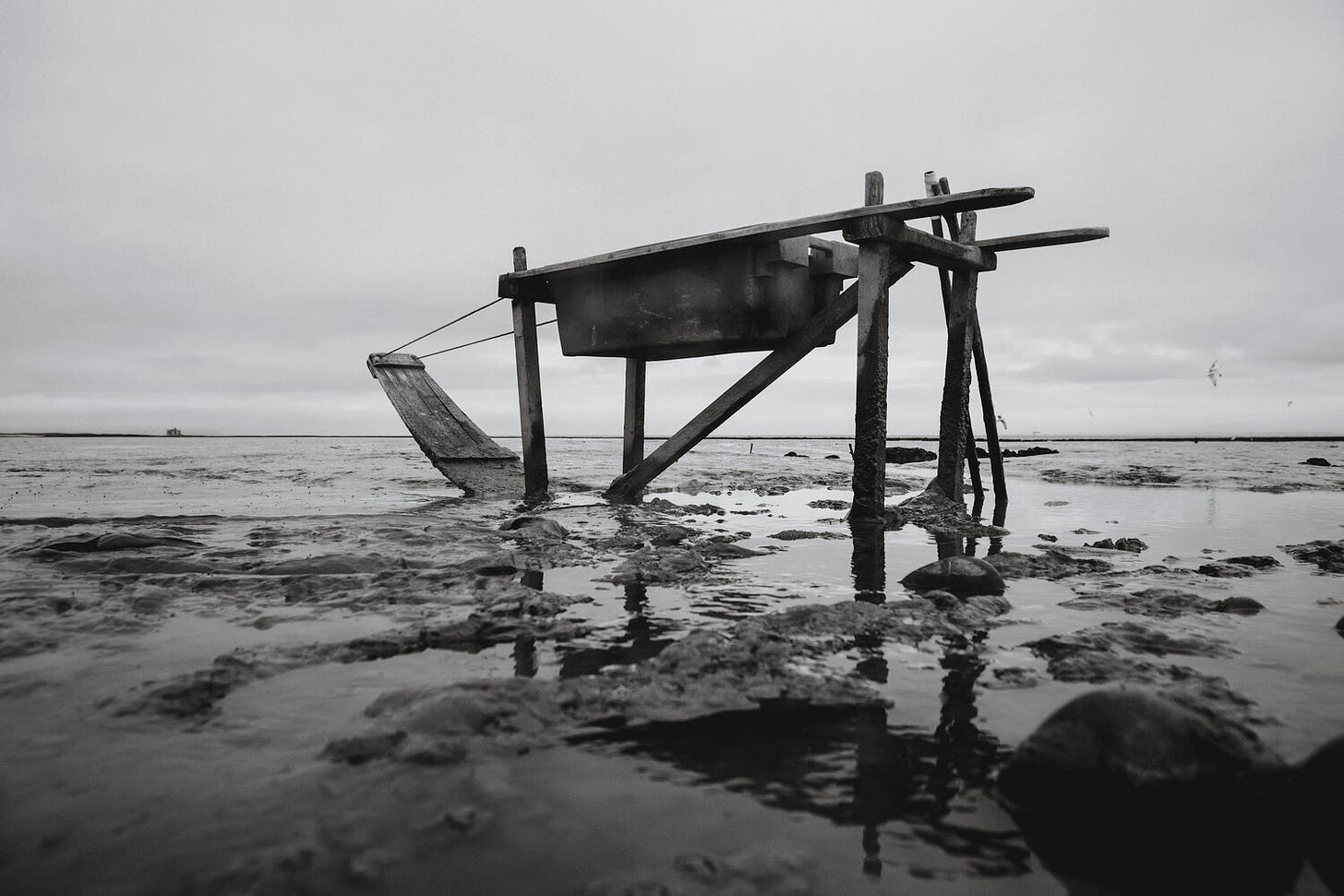They don't fish (the Bristol Channel) like this anymore
A nod to the last mudhorse fisherman’s contributions towards a small hyperlocal food economy in Somerset
Venturing too far out of Bridgewater Bay at low tide isn’t best advised. The mudflats there are at times like quicksand and, though it’s possible to walk miles from the shore, to do so would take you to a featureless landscape that in fog or low light can have you misremembering which way’s the Bristol Channel and which way’s dry land. By the time you’d figured it out, it might be too late, as some have found out to their demise.
This, however, was part of the daily occupation for Brendan Sellick, who, since his early teens, set out across the mudflats to collect his daily catch. Two miles from the shore, he’d keep several sock-shaped nets anchored by a stake that would help him haul in the likes of brown shrimp, sea bass, grey mullet, sole, skate, cod, plaice, dogfish, sprat, hake, octopus, and even conger eel. These would then, for the most part, be sold to local households from his shop in Stolford.

Since the mudflats were so perilous (this is the Bristol Channel we’re talking about, which has the second largest tidal range in the world), the only way Brendan could get to his his nets and back was via a mudhorse – essentially a man-powered wooden sledge that he pushed in front of him on the mud, even while knee-deep in it. The mudhorse is bronze age technology, and looks distinctly like it could be nothing else.
For those living in at least relative proximity to Brendan’s shop in Stolford – a village next door to Hinkley Point – this was about the only way you could get fresh fish. In the ‘50s, and unlike now, it wasn’t just Brendan: six or seven other mudhorses, he remembered, would also set off across the flats to ultimately feed their communities. That was when mudhorse fishing was last at its peak. A few things made sure of this, not least the introduction of supermarkets around the time, and by extension the availability of cheaper fish. You might say that was inevitable – how could one man with a modest daily catch possibly compete with that of the average North Sea trawler, if not a fleet of them?
This was a problem compounded by the fact that mudhorse fishing was – give or take – a 3,000 year-old tradition quite incompatible with modern cost-cutting innovations. Ditto modern comforts: As Brendan’s son Adrian put it while being recorded in a video for Somerset Rural Life Museum, “You want to come out here and get muddied up freezing cold for a few bob?”

In the latter part of his life, Brendan’s job became more of a hobby. A tradition he felt needed preserving. His dad had done it, as had his dad, as had his dad, and so on. Supermarkets were one thing – what made Brendan’s way of life even less tenable was the construction of Hinkley Point C, the nuclear power station so huge that, when finally complete, will fulfil 7% of the UK’s electricity demand. Hinkley Point C, like the A and B before it, is built close to the shore in order to harness the Bristol Channel as a coolant for its reactors, with little regard for what that means for local wildlife (campaigners say Hinkley’s cooling tunnels could be fatal for “millions” of fish).
In any case, a lot of the damage may have been done before then – reverberations from the construction of Hinkley Point C are thought to have displaced local fish stocks, temporarily or otherwise. “It makes me angry that EDF don't support us and this old way of living,” Brendan told Somerset Live.

Brendan Sellick died in 2021.1 And so did with him the practice of mudhorse fishing. I’m not one for preferring the continuation of a tradition merely for a tradition’s sake, but this was different. Namely, in its genuine value of providing wild, fresh food for a community by a member of that community. It’s unfortunate Brendan became relatively famous not for what he did, but because he was the last person to do it. The last mudhorse fisherman in Somerset, the last in Britain, and quite possibly the last in the world.
More on this story, and from Brendan, via Somerset Voices:
From what I can tell, Brendan’s house is now a holiday cottage


